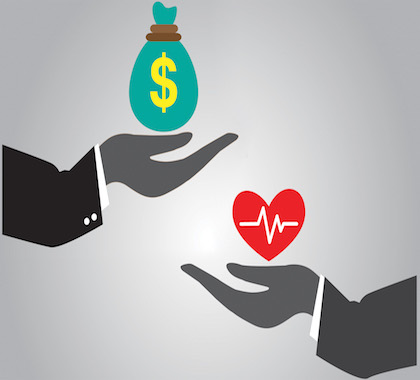The survey considered health care costs, accessibility, and outcomes in determining the standings. The survey also included state rankings on specific ailments and patients’ access to providers and services. The study considered 40 measures in determining the cost evaluations.
Costs vs. Results
“[H]igher costs don’t necessarily translate to better results,” author Adam McCann writes in the report. Utah had the sixth-best rank in Outcomes while coming in at 26th in costs, whereas Washington, DC had the highest costs but was 36th in Outcomes.
Although Vermont ranked first in Outcomes and third in Cost, it rated only 23rd in Access, reflecting restrictive government regulatory policies.
Vermont was forced in 2014 to reconsider its plan to impose a single-payer health care system by 2017 because, as Gov. Peter Shumlin admitted at the time, the state could not afford it. In 2016, the state allowed enrollment in individual market coverage directly through an insurance company. Previously, all enrollments had been through the Obamacare exchange. In 2017, the state began publicly encouraging that same pathway for all applicants who weren’t eligible for a subsidy.
Louisiana expanded Medicaid in 2016 under the Affordable Care Act (ACA) and uses the federally facilitated exchange.
Government Barriers to Access
Charlie Katebi, state government relations manager at The Heartland Institute, which publishes Health Care News, says Vermont still has government-imposed obstacles that reduce patient access and increase costs.
“Although Vermont has certainly benefited from its location in the Northeast, which has a high concentration of physicians, the state imposes significant barriers to health care access,” Katebi said. “For instance, Vermont’s Certificate of New law prohibits health care providers from opening or expanding their practices unless they receive permission from the Green Mountain Care Board. According to estimates from the Mercatus Center, these policies can add hundreds of dollars to a patient’s medical bill.”
Needs for Improvement
“The overall health of the population, more advanced medical equipment and a general lack of awareness regarding the best types of treatment, for instance, can all affect costs,” the study states. “Today, the average American spends more than $10,000 per year on personal health care, according to the most recent estimates from the Centers for Medicare & Medicaid Services. That’s about 17.9 percent of the U.S. GDP.”
The survey notes health care accessibility is fairly good in most states but needs improvement. “According to the CDC, 88.1 percent of the population has a regular place to go for medical care,” author Adam McCann writes. The survey considered a variety of factors, such as providers per capita, average response and wait time, and Medicare and Medicaid acceptance rates in rating overall access. Maine ranked number one in overall access, and Texas ranked last.
Internet Info:
Adam McCann, “Best and Worst States for Health Care,” WalletHub, August 6, 2018:
https://wallethub.com/edu/states-with-best-health-care/23457/





